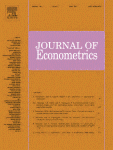 Professor Jorge Agüero has published his paper “COVID-19 and The Rise of Intimate Partner Violence” in World Development
Professor Jorge Agüero has published his paper “COVID-19 and The Rise of Intimate Partner Violence” in World Development
The paper may be found online at: https://doi.org/10.1016/j.worlddev.2020.105217
The abstract is below:
Title: COVID-19 and The Rise of Intimate Partner Violence
Abstract: Stay-at-home policies have been implemented worldwide to reduce the spread of the SARS-CoV-2 virus. However, there is a growing concern that such policies could increase violence against women. We find evidence in support of this critical concern. We focus on Peru, a country that imposed a strict nationwide lockdown starting in mid-March and where nearly 60% of women already experienced violence before COVID-19. Using administrative data on phone calls to the helpline for domestic violence (Línea 100), we find that the incidence rate of the calls increased by 48 percent between April and July 2020, with effects increasing over time. The rise in calls is found across all states and it is not driven by baseline characteristics, including previous prevalence of violence against women. These findings create the need to identify policies to mitigate the negative impact of stay-at-home orders on women’s safety.
 Professor Jungbin Hwang has had his article
Professor Jungbin Hwang has had his article